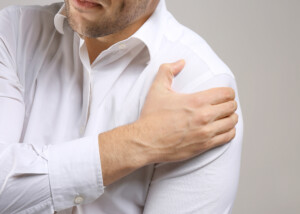
Low back pain is no picnic.
If you don’t want to be on narcotics to relieve the pain, you’ll want to try a cold pack or maybe a hot water bottle.
But which one works better for your hurting low back: cold or heat?
The first rule is not to mindlessly apply cold OR heat to your low back. There must be a plan in place.
I asked Kaixuan Liu, MD, PhD, about what to do. Dr. Liu is a nationally distinguished leader in endoscopic spine surgery and chief surgeon at Atlantic Spinal Care in Edison, N.J.
First find out what the source of the pain is, says Dr. Liu. You could have messed up your low back doing yard work or falling or even lifting a child.
“With a mechanical injury, you might feel anything from dull aching to a shooting or stabbing pain,” notes Dr. Liu.
“You might also experience stiffness or loss of flexibility that prevents you from standing or sitting normally.”
Sudden pain may be short-lived but may also recur over and over.
Chronic low back pain just keeps on going and going — beyond 90 days. Like sudden or acute back pain it can be caused by a sudden wrong move or poor positioning when lifting something.
But it can also be caused by degeneration in the spine.
Hot vs. Cold for Low Back Pain
“It’s all about inflammation,” points out Dr. Liu. Inflammation is the typical result of sudden injuries, with a blood influx to the affected area, with response of immune cells and other agents whose job is to eliminate invaders to the body (if any).
“In the case of acute muscle or joint injury,” says Dr. Liu, the inflammatory response “creates swelling that is the beginning of a healing process.”
And this natural process can hurt.
For acute (sudden) inflammation, use ice, advises Dr. Liu. “The cold shrinks the small blood vessels in the area which keeps blood and other fluids from flooding to the injury site, decreasing swelling.”
He adds, “It also will slow nerve impulses in the area, which interrupts transmission of pain messages, and numbs the area much like a local anesthetic does.”
Acute inflammation can damage tissue. Cold helps reduce this damage.
Heat treatment promotes blood circulation and this will hinder pain. However, Dr. Liu says that heat application to an acute inflammatory site can worsen the swelling: more pain.
If you do not have chronic inflammation use heat to open up blood vessels and increase blood flow and nutrients. This will promote healing.
For low back pain heat will also help relax muscles and hinder spasms and stiffness, plus stimulate nerves.
If you wrench your back with a sudden wrong movement, Dr. Liu says to apply ice. This is an acute injury. Keep the cold on for 15 to 20 minutes, three times a day, for one to two weeks.
After that apply heat for 15 to 20 minutes three times a day. Make sure at least two hours pass between either heat or cold/ice.
Dr. Liu says, “There’s a popular myth that heat and cold are interchangeable in treating back pain. It’s true they both relieve pain, but the mechanisms that produce the pain relief are completely different, and that means each has its time and place.”
 Dr. Liu specializes in disc herniations, spinal stenosis, spondylolisthesis, and mitigating failed neck and back surgery, among many other conditions that affect the neck, mid and lower back.
Dr. Liu specializes in disc herniations, spinal stenosis, spondylolisthesis, and mitigating failed neck and back surgery, among many other conditions that affect the neck, mid and lower back.
 Lorra Garrick is a former personal trainer certified through the American Council on Exercise. At Bally Total Fitness she trained women and men of all ages for fat loss, muscle building, fitness and improved health.
Lorra Garrick is a former personal trainer certified through the American Council on Exercise. At Bally Total Fitness she trained women and men of all ages for fat loss, muscle building, fitness and improved health.
.

























